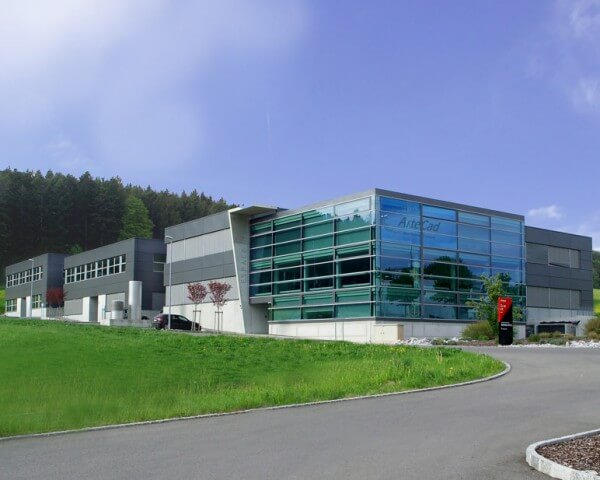At Cortech, its production facility at Cornol in the Jura, TAG Heuer has installed the production line for its calibre 1887 chronograph. “In 2009, when we started, the objective was to produce 50,000 movement blanks in three years,” explains David de Oliviera, Head of the workshop. “This first phase was a CHF 20 million (USD 20.5 million / EUR 16.7 million) investment and now it’s complete. The next stage is to double our capacity to 100,000 blanks, again in just three years, and move the production lines to the new Chevenez plant where construction has just started.”
A second calibre is on the way
In the last few years, TAG Heuer has been undertaking a very rapid process of vertical integration. It started with the Cortech factory built in 2004, which was dedicated exclusively to producing watch cases. The first calibre to be developed in-house was the 1887, based on plans bought from Seiko, and when this work began the company naturally installed its most advanced equipment at the Cortech site in order to maximise the automation of production. Today, the machining centres operate 24 hours a day, 6 days a week, in fully autonomous mode for two thirds of the time.
The planned doubling of production will take place at Chevenez (JU) and will mean a major increase in staff – from 40 people today to 150 three years from now. Meanwhile, the tooling installed at Cortech will also be needed to produce the second calibre, the 1888, this time entirely developed internally. “We are currently producing the first prototypes,” says De Oliveira. “This chronograph movement has a different concept to the 1887 but it has to meet the same industrial requirements so that we can optimise production.”
It employs 180 people and produces 200,000 cases a year, principally for the parent company and for Zenith.
Acquisition of ArteCad
This increased ability of TAG Heuer to produce movements will be matched by an increased production of other watch components. The move to Chenevez will free up space at Cortech and enable it to expand its own industrial capacity. Currently, this TAG Heuer subsidiary has an annual turnover in the region of CHF 35 million (USD 35.6 million / EUR 29.1 million), it employs 180 people and produces 200,000 cases a year, principally for the parent company and for Zenith. The goal is to gradually reach 300,000. Its activities range from stamping to polishing and assembly as well as all the machining processes. Everything is planned for maximum output and flexibility: low inventory levels and accelerated material flow according to demand, supported by a constantly evolving pool of machinery.
But TAG Heuer was not content with just these two production facilities, even though they are complemented by an advanced movement workshop at its principal site in la Chaux-de-Fonds. Last year it acquired ArteCad, a dial manufacturer based at Tramelan (BE). This is an operation it already knew well; ArteCad had been a family-owned company for over 125 years when it was acquired in 2000 by TAG Heuer’s owner, LVMH. Four years later, it was given a new lease of life by a management buy-out. One of that management team was Philippe Hubbard who is currently Director of Product Development. “We kept our independence for 7 years,” he explains “and in that time we first cleaned up the situation then built up the business, particularly by expanding our customer base. Staff numbers rose from 55 to 230 today.”

More than 150 operations per dial
ArteCad supplies the LVMH Group members TAG Heuer, Hublot, Zenith Luis Vuitton as well as other Maisons such as Bulgari. “We want to maintain these partnerships to safeguard our production,” continues Hubbard. “It allows us to meet any level of demand, from single pieces to large volumes as well as small series and gem-setting.” At first, when it was still heavily dependent on sub-contractors, ArteCad also began vertical integration and became one of the most integrated of all dial makers. The fact that producing a chronograph dial involves no fewer than 150 operations is an indication of how many different specialisms ArteCad is able to use today. And that number does not include the laser technologies that the company was the first to introduce in dial making, or the new presses that produce stampings that were previously impossible.
“Dial-making is one of the most delicate activities in watchmaking and it leaves very little room for error. The first stage is polishing, followed by surface treatment, machining, electroplating, painting, transferring, assembling and depositing luminescent material,” Hubbard explains. “In addition, the components must be washed between each stage, and the markers must be produced and applied.” After the polishing stage, there is very little possibility of reworking. So, with the large number of operations involved, it is essential that machining meets very rigorous quality standards. “In this company we produce our series with only 10% scrap, which is a record.” TAG Heuer could not wish for a better partner.





















